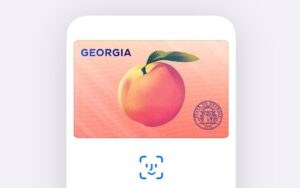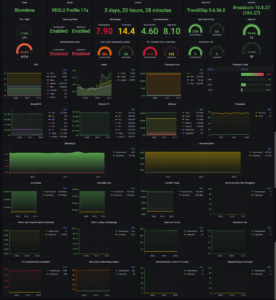Are you tired of staring at a blank screen, struggling to find the right words for your next blog post? You’re not alone. Blog writing can be daunting, especially when creativity feels out of reach. That’s where blog post templates come in handy. They serve as a roadmap, guiding you through the writing process and helping to spark those creative juices.
Imagine having a structured outline ready to go every time inspiration strikes or deadlines loom large. With effective blog post templates at your fingertips, crafting engaging content will become easier and more efficient than ever before. Whether you’re an experienced blogger or just starting out, these templates can transform how you approach writing.
Ready to unleash your blogging potential? Let’s dive into ten tips that will help you make the most of blog post templates!
What are Blog Post Templates?
Blog post templates are structured outlines designed to streamline the writing process. They provide a framework that guides you through essential components of a blog post, such as headings, subheadings, and key sections.
These templates can vary widely in style and format. Some may focus on storytelling elements, while others emphasize informative content or listicles. The beauty lies in their adaptability; they cater to different niches and audiences.
Using a template helps ensure that no crucial points are overlooked. It serves as a checklist for your ideas and keeps your thoughts organized.
Additionally, templates can save valuable time during brainstorming sessions. When you have an established layout ready to go, it’s easier to fill in the gaps with relevant information and insights tailored to your readers’ interests.
Benefits of Using Templates for Your Blog Posts
Using blog post templates streamlines your writing process. They provide a clear structure that can help you focus on content rather than formatting.
Templates save time. Instead of starting from scratch for every post, you can quickly fill in the sections with your ideas and insights. This efficiency allows for more frequent posting.
Consistency is another significant benefit. Templates ensure your posts have a uniform style and tone, enhancing brand recognition without extra effort.
With predefined layouts, you avoid common pitfalls like missed headings or misaligned visuals. It helps maintain professionalism across all your writings.
Templates can spark creativity. With a solid framework in place, you might find new angles to explore within familiar formats.
Where to Find Blog Post Templates
Finding blog post templates is easier than you might think. Numerous websites offer free and premium options tailored to various niches.
Start with platforms like Canva. They provide visually appealing templates that can be customized easily. Just pick a design, tweak the content, and you’re set.
Another great resource is HubSpot. Their library boasts an array of professionally designed templates to help streamline your writing process.
Consider using Google Docs or Microsoft Word too. Both platforms often have built-in templates available for quick access.
Don’t overlook community forums or social media groups related to blogging. Members frequently share their own creations, which can inspire fresh ideas for your posts.
Explore online marketplaces such as Etsy or Creative Market for unique designs crafted by talented creators looking to enhance your blog’s aesthetic appeal.
Tips for Customizing and Personalizing Templates
Customizing a blog post template is essential for making it your own. Start by altering the layout. Rearranging sections can enhance flow and engagement.
Next, focus on colors and fonts that reflect your brand’s personality. Choose combinations that are easy to read yet visually appealing. This creates a cohesive look across all posts.
Incorporate unique elements like custom headers or footers. Adding personal touches, such as quotes or images relevant to your message, helps connect with readers.
Don’t forget about adjusting content placeholders! Tailor them to fit your writing style and voice, ensuring they resonate with your audience.
Consider seasonal themes or trends. Updating templates periodically keeps content fresh while maintaining familiarity for repeat visitors. Personalization not only showcases creativity but also strengthens reader loyalty.
Utilizing Visuals in Your Template Design
Visuals play a crucial role in enhancing your blog post templates. They capture attention and communicate ideas quickly. Using images, infographics, or videos can boost engagement significantly.
When designing your template, think about how visuals complement the text. A well-placed image can break up long paragraphs, making content more digestible. Consider using consistent graphic styles that align with your brand for a cohesive look.
Don’t forget about accessibility! Use alt text for all images to ensure people with visual impairments understand your content. This simple addition benefits both users and SEO.
Experiment with different types of visuals to see what resonates best with your audience. Charts can clarify data points while illustrations add personality. The right mix will keep readers coming back for more engaging experiences on your blog.
Incorporating SEO Best Practices into Your Template
Incorporating SEO best practices into your blog post templates can significantly boost visibility. Start by ensuring that each template includes space for relevant keywords. These should align with the topic and resonate with what your audience searches for online.
Next, focus on title tags and meta descriptions. Your template should prompt you to fill these out effectively, as they play a crucial role in enticing clicks from search results.
Don’t forget about header tags (H1, H2). They help structure your content while improving readability for both users and search engines.
Consider adding alt text fields for images within the template. This not only enhances accessibility but also allows you to optimize visuals for search engines. Remember, each element contributes to a cohesive SEO strategy that can elevate your blog’s performance over time.
Formatting Your Posts for Easy Reading
Formatting is crucial for creating an inviting blog post. Readers often skim, so make your content easily digestible.
Use short paragraphs to break up text. Large blocks can be daunting and may drive readers away. Aim for three to five sentences per paragraph.
Headings and subheadings help guide the reader through your work. They allow quick navigation, making it easier to find relevant information.
Bullet points or numbered lists are effective in highlighting key points. These formats draw attention and improve retention of information.
Incorporate plenty of white space around text elements too. This enhances focus and reduces visual clutter, encouraging readers to stay engaged longer.
Don’t forget about font size and style; they impact readability on different devices. Prioritize clear typefaces that don’t strain the eyes during prolonged reading sessions.
A well-formatted blog post invites deeper engagement with your audience’s interests.
Maintaining Consistency with Branding and Tone
Branding and tone play crucial roles in establishing your blog’s identity. Consistency in these areas helps create a recognizable presence. When readers see your posts, they should immediately feel the connection to your brand.
Start by defining your voice. Is it casual and friendly, or professional and authoritative? Having a clear understanding of this will guide all written content.
Next, apply visual elements consistently. Use specific colors, fonts, and layouts that reflect your brand’s personality across all blog post templates. This creates an overall cohesive look that complements the written message.
Don’t forget about imagery! Every image should align with your tone—be it lighthearted illustrations or serious stock photos.
Using similar structures for posts can also reinforce branding. Readers appreciate familiarity as much as creativity within those boundaries. Stay true to who you are while allowing room for innovation within the established style.
Collaborating with Others on Template Creation
Collaborating with others on blog post templates can spark creativity and bring fresh perspectives. When you involve team members or fellow writers, ideas flow more freely.
Each collaborator may have unique strengths. One might excel in design while another has a knack for content structure. This blend of skills can elevate the quality of your templates.
Use tools like Google Docs or Trello to facilitate collaboration. These platforms allow everyone to contribute in real time, making it easier to share feedback and brainstorm together.
Don’t forget about setting clear goals for your template project. Agreeing on the purpose and target audience ensures that all voices align towards a shared vision.
Encouraging open dialogue fosters an environment where innovative ideas thrive. Embrace constructive criticism; it helps refine the final product into something truly valuable.
Measuring the Success of Your Template Strategy
Measuring the success of your template strategy is crucial for understanding its effectiveness. Start by tracking key performance indicators (KPIs) related to your blog posts. These might include page views, time spent on the page, bounce rates, and social shares.
Use analytics tools like Google Analytics to gather data on how each post performs over time. Look at which templates yield the best engagement and conversion rates. This information will guide you in refining your approach.
Consider gathering reader feedback as well. Surveys or comment sections can provide insights into what resonates with your audience and what doesn’t. Incorporating this feedback helps improve future templates.
Regularly revisit your metrics to understand trends and patterns in your content’s performance. Adjusting based on data ensures that you’re not just creating engaging content but also meeting business goals effectively.
By consistently measuring these aspects, you’ll create a more targeted blogging strategy that maximizes the potential of your blog post templates.



